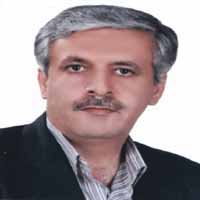Assessing earthworm and sewage sludge impacts on microbiological and biochemical soil quality using multivariate analysis
Author(s):
Abstract:
Introduction
Land application of organic wastes and biosolids such as municipal sewage sludge has been an important and attractive practice for improving different properties of agricultural soils with low organic matter content in semi-arid regions, due to an increase of soil organic matter level and fertility. However, application of this organic waste may directly or indirectly affect soil bio-indicators such as microbial and enzymatic activities through a change in the activity of other soil organisms such as earthworms. Earthworms are the most important soil saprophagous fauna and much of the faunal biomass is attributed to the presence of these organisms in the soil. Therefore, it is crucial to evaluate the effect of earthworm activity on soil microbial and biochemical attributes, in particularly when soils are amended with urban sewage sludge. The purpose of this study was to evaluate the earthworm effects on biochemical and microbiological properties of a calcareous soil amended with municipal sewage sludge using Factor Analysis (FA).Materials And Methods
In the present study, the experimental treatments were sewage sludge (without and with 1.5% sewage sludge) as the first factor and earthworm (no earthworm, Eiseniafoetida from epigeic group, Allolobophracaliginosa from endogeic group and a mixture of the two species) as the second factor. The study was setup as 2×4 full factorial experiment arranged in a completely randomized design with three replications for each treatment under greenhouse conditions over 90 days. A calcareous soil from the 0-30 cm layer with clay loam texture was obtained from a farmland field under fallow without cultivation history for ten years. The soil was air-dried and passed through a 2-mm sieve for the experiment. Sewage sludge as the soil organic amendment was collected from Wastewater Treatment Plant in Shahrekord. Sewage sludge was air-dried and grounded to pass through a 1-mm sieve for a uniform mixture with soil matrix.Heavy metals concentrations were found to be below the maximum permissible limits for municipal sewage sludge. After applying sewage sludge treatments, the pots were irrigated (70% soil field capacity) for three months to achieve a relative equilibrium condition in the soil. Eight adult earthworms with fully-developed clitellum were added to each pot. In the pots with both earthworm species, 4 specimen of each earthworm species was added. At the end of the experiment (90 days), soil samples were collected from treatments and were separately air-dried for chemical analysis or kept fresh and stored (4oC) for microbial analysis. Finally, data obtained from the study were analyzed using multivariate analysis.Results And Discussion
Factor analysis led to the selection of three factors with eigen value greater than 1. The first, second and third factors were accounted for 62, 17.7 and 9.2% of the variability in soil data, respectively. The three factors together explained 89% of the original variability (i.e., variance) in the soil dataset. Consequently, three factors were retained to represent the original variability of the dataset. The first factor had 16 highly weighted variables with a negative loading for soil pH and positive loadings for other variables. The first factor, which included most soil indicators as input variables, clearly separated sewage sludge treatments. Most of the soil microbial characteristics were increased by sewage sludge application due to the high contents of organic matter and nutrients in sewage sludge, as well as low concentrations of heavy metals. Fungal respiration, bacterial respiration and microbial biomass carbon loaded heavily on the second factor with a negative loading for fungal respiration and positive loadings for bacterial respiration and microbial biomass carbon. The second factor, which included microbial biomass and community composition, noticeably discriminated earthworm treatments. In sewage sludge treatments, the dependence of E. foetidaspecies on soil microorganisms as a food source declined, because of the consumption of organic waste by this epigeic species. However, the activity and impact of A. caliginosa species from endogeic group was only related to soil microbial biomass probably due to selective feeding of soil microorganisms.Conclusion
Factor analysis was used successfully in discriminating the effects of sewage sludge and earthworm either alone or in combination on soil microbial and biochemical parameters. A. caliginosa species in soils amended with sewage sludge had a positive effect on microbial community and biomass, while E. foetidaspecies had no such effect. A. caliginosa species indirectly benefited from sewage sludge application following the increase of soil microbial biomass. In summary, A. caliginosa species positively affected microbiological and biochemical properties in soils amended with sewage sludge due to its less dependence on this organic resource.Keywords:
Language:
Persian
Published:
Journal of water and soil, Volume:31 Issue: 1, 2017
Pages:
168 to 178
magiran.com/p1703002
دانلود و مطالعه متن این مقاله با یکی از روشهای زیر امکان پذیر است:
اشتراک شخصی
با عضویت و پرداخت آنلاین حق اشتراک یکساله به مبلغ 1,390,000ريال میتوانید 70 عنوان مطلب دانلود کنید!
اشتراک سازمانی
به کتابخانه دانشگاه یا محل کار خود پیشنهاد کنید تا اشتراک سازمانی این پایگاه را برای دسترسی نامحدود همه کاربران به متن مطالب تهیه نمایند!
توجه!
- حق عضویت دریافتی صرف حمایت از نشریات عضو و نگهداری، تکمیل و توسعه مگیران میشود.
- پرداخت حق اشتراک و دانلود مقالات اجازه بازنشر آن در سایر رسانههای چاپی و دیجیتال را به کاربر نمیدهد.
In order to view content subscription is required
Personal subscription
Subscribe magiran.com for 70 € euros via PayPal and download 70 articles during a year.
Organization subscription
Please contact us to subscribe your university or library for unlimited access!



